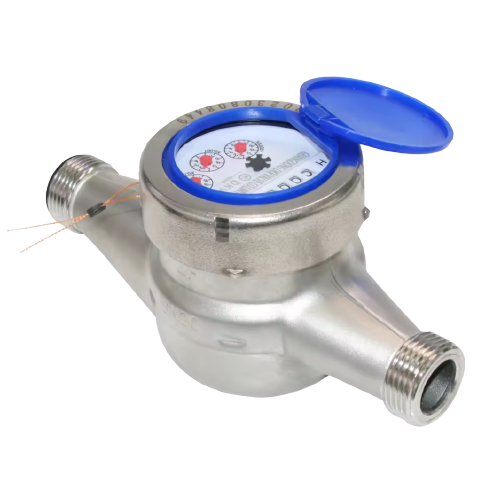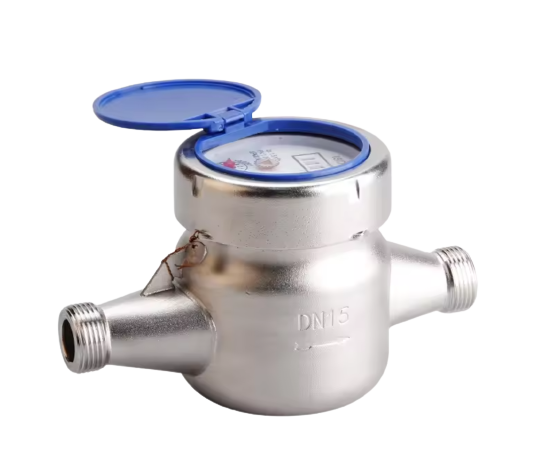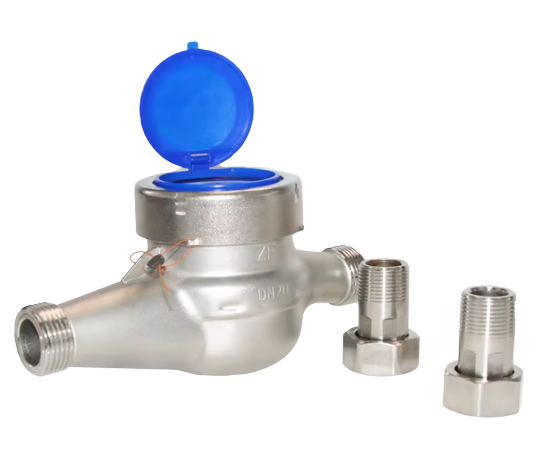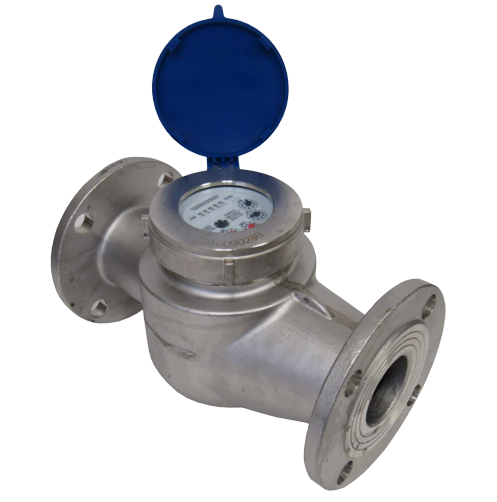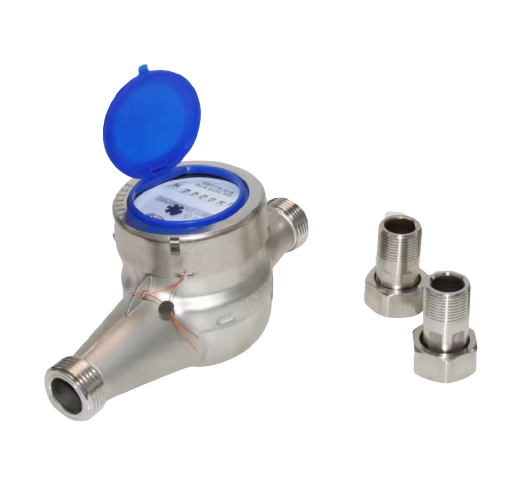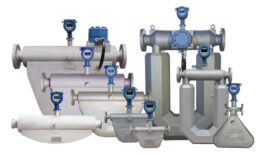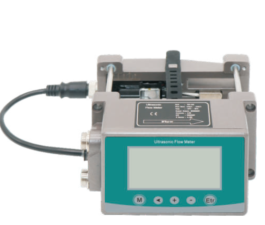Description
A Positive Displacement (PD) meter measures the flow rate of fluids by trapping a fixed volume of fluid and counting how many times this volume fills and empties. Various industries widely use this type of flow meter for its accuracy and reliability, especially in applications requiring precise fluid measurement. Here’s a detailed description of how it works, its types, applications, advantages, and limitations.
Principle of Operation
The fundamental principle of a Positive Displacement meters is based on the displacement of a fixed volume of fluid. In addition, it operates on the idea that by measuring how many times a known volume of fluid displaces or moves through the meter, you can accurately determine the flow rate.
Types of Positive Displacement Meters
There are several types of Positive Displacement meters, each with its own unique mechanism for trapping and measuring the fluid volume. Here are the most common types:
Gear Meters:
These meters use two or more gears that rotate as the fluid flows through the meter. In addition, the fluid fills the space between the gears and displaces as the gears turn. The number of rotations is proportional to the volume of fluid passing through the meter. The oil and chemical industries commonly use gear meters because they excel at measuring viscous fluids.
Diaphragm Meters
In diaphragm meters, a flexible diaphragm divides the fluid and moves in response to the flow. The diaphragm’s movement creates a series of chambers of known volume, which the fluid fills and empties. Finally, the meter counts how many times the chambers fill and empty to determine the flow rate.
Piston Meters
These meters use a piston that moves back and forth within a cylinder. The fluid enters the cylinder, pushes the piston, and displaces a fixed volume of fluid with each piston stroke. Finally, the system counts the number of piston strokes to measure the flow rate.
Oval Gear Meters
These meters feature two oval gears that rotate within a chamber. As the fluid flows through, it fills the spaces between the gears and displaces them with each rotation. In addition, oval gear meters are often used in applications where high accuracy and reliability are required, such as in the pharmaceutical and food industries.
Coriolis Flow Meters
Although not a traditional PD meter, some modern PD flow meters incorporate Coriolis technology to enhance accuracy. Finally, coriolis meters measure mass flow and density by using the Coriolis effect, providing high precision in flow measurement.
Conclusion
Positive Displacement meters are renowned for providing precise and reliable measurements of fluid flow. By mechanically trapping and counting fixed volumes of fluid, they provide accurate and repeatable measurements. This is suitable for a wide range of industrial applications. Despite their higher cost and potential maintenance needs, their ability to handle various fluid types and maintain accuracy. This over time makes them a valuable tool in many industries.
Specifications
| Size |
1/2″ – 2″ |
| Type |
Multi-jet Water Meter |
| Medium |
Cold Water & Hot Water |
| Material |
Stainless Steel 304/316 / Brass |
| Application |
Water, Sea Water, Corrosive, Chemical, Food Grade |
| Medium Temperature |
Cold Water 0~50°C / Hot Water 0~130°C |
| Threaded End MNPT |
NPT /BSP |
| Working Pressure |
150PSI |
Installation
Installing a Positive Displacement (PD) water meter correctly is crucial to ensuring accurate measurement and reliable operation. Here is a step-by-step guide to the installation procedures for a PD water meter:
Preparation
Verify Specifications:
Ensure the PD water meter is suitable for your application in terms of flow range, pressure, and fluid compatibility.
Gather Tools and Materials:
Tools may include wrenches, pipe cutters, pipe sealant, and level. Materials could include pipe fittings and support brackets.
Check Local Regulations:
Review any local codes or standards for water meter installation that may apply.
Site Inspection
Location:
Choose a location that allows for easy access for maintenance and reading. Ensure it’s free from vibrations, extreme temperatures, and chemical exposure.
Pipe Alignment:
Verify that the pipes are properly aligned and that there is sufficient space for the meter. The meter should be installed in a straight section of pipe.
Verify Pipe Size:
Confirm that the pipe size matches the meter’s inlet and outlet dimensions.
Preparation of Piping
Shut Off Water Supply:
Turn off the water supply to prevent leaks or flooding during installation.
Drain Water:
Drain any remaining water from the pipes where the meter will be installed.
Clean Pipe Ends:
Clean the ends of the pipe to remove any debris, rust, or old sealant.
Check for Damage:
Inspect the pipes for any damage that could affect the installation or meter operation.
Meter Installation
Orientation:
Install the meter according to the manufacturer’s recommended orientation, typically with the flow direction arrow on the meter pointing in the direction of water flow.
Install Fittings:
Attach the meter to the pipe using the appropriate fittings. Ensure the fittings are compatible with the meter’s connections and are properly aligned.
Secure the Meter:
Ensure the meter is securely mounted. Use support brackets or straps as needed to prevent movement or vibration.
Avoid Excessive Force:
Do not overtighten fittings or connections, as this can damage the meter or cause leaks.
Seal Connections:
Apply pipe sealant or thread tape to threaded connections to prevent leaks. Follow the manufacturer’s recommendations for sealant use.
System Testing
Refill System:
Slowly turn the water supply back on to refill the system and check for leaks.
Check for Leaks:
Inspect all connections and fittings for leaks. Tighten as needed but avoid excessive force.
Purge Air:
Open any air release valves or vents to purge trapped air from the system. This helps ensure accurate readings and proper operation.
Verify Operation:
Check the meter for correct operation by observing its readings and comparing them with expected values. Ensure the meter displays the flow rate correctly.
Final Checks
Calibration:
If required, calibrate the meter according to the manufacturer’s instructions to ensure accuracy.
Record Data:
Document the installation details, including the meter model, serial number, installation date, and initial readings.
Inform Users:
If applicable, inform relevant personnel of the new meter installation and any changes in operation or maintenance procedures.
Maintenance and Follow-Up
Schedule Maintenance:
Establish a maintenance schedule to regularly check the meter’s performance and accuracy.
Monitor Performance:
Periodically review the meter readings and performance to ensure continued accuracy and detect any potential issues early.
By following these installation procedures, you can ensure that your Positive Displacement water meter is installed correctly and operates effectively, providing accurate and reliable flow measurements.
Maintenance
Maintaining a Positive Displacement (PD) water meter is essential to ensure its accuracy, reliability, and longevity. Regular maintenance helps prevent issues such as wear, leaks, and calibration drift. Here is a comprehensive guide to the maintenance procedures for a PD water meter:
Routine Inspection
Visual Check:
Inspect the meter regularly for any visible signs of damage, leakage, or wear. Look for rust, corrosion, or unusual vibrations.
Verify Readings:
Compare the meter readings with known flow rates or other measurement methods to check for accuracy. Significant discrepancies may indicate a problem.
Check for Leaks:
Examine all connections and fittings for leaks. Tighten any loose connections, but avoid overtightening, which can damage the meter or cause leaks.
Cleaning
External Cleaning:
Wipe the meter’s exterior with a clean, dry cloth to remove dirt and debris. For stubborn stains, use a mild detergent and water, but avoid harsh chemicals.
Internal Cleaning:
Depending on the fluid and installation conditions, internal cleaning may be necessary. Follow the manufacturer’s guidelines for cleaning procedures. In many cases, periodic flushing with clean water can help remove debris and prevent build-up.
Calibration
Regular Calibration:
Check and calibrate the meter according to the manufacturer’s recommendations. Calibration ensures accuracy over time, especially if the meter has experienced significant wear or operational changes.
Use Certified Equipment:
Perform calibration using certified calibration equipment or send the meter to a professional calibration service.
Document Calibration:
Record calibration results and any adjustments made. Maintain a log of calibration dates and findings for reference.
Checking Mechanical Components
Inspect Moving Parts:
For meters with gears, pistons, or diaphragms, check for signs of wear or damage. Replace worn or damaged parts as needed.
Lubrication:
Some PD meters require periodic lubrication of moving parts. Follow the manufacturer’s instructions regarding lubrication types and intervals.
Test Operation:
Manually rotate or move any mechanical components (if applicable) to ensure smooth operation. There should be no unusual resistance or grinding.
Filter and Strainer Maintenance
Clean Filters:
If the meter has a filter or strainer, clean or replace it regularly to prevent clogging. A clogged filter can affect accuracy and flow.
Inspect for Debris:
Remove any debris from the filter and check the surrounding area for buildup that could affect meter performance.
System Checks
Verify Flow Conditions:
Ensure that the operating conditions (e.g., pressure, temperature) are within the meter’s specifications. Excessive pressure or temperature can affect performance.
Check Flow Direction:
Confirm that the meter is installed in the correct flow direction. Incorrect flow direction can lead to inaccurate measurements and potential damage.
Preventive Maintenance
Schedule Maintenance:
Develop a maintenance schedule based on the manufacturer’s recommendations and operational conditions. Regular maintenance helps prevent unexpected failures.
Monitor Performance:
Continuously monitor the meter’s performance and address any issues promptly. Early detection of problems can prevent more serious issues.
Documentation and Records
Maintain Logs:
Keep detailed records of all maintenance activities, including inspections, cleaning, calibration, and repairs. Document any issues and resolutions.
Review History:
Periodically review maintenance records to identify any recurring issues or patterns that may require attention.
Professional Service
Seek Expert Help:
For complex issues or significant repairs, consult with a professional service provider or the manufacturer’s support team. They can offer specialized expertise and ensure proper handling of the meter.
Follow Manufacturer’s Recommendations:
Always adhere to the manufacturer’s guidelines for maintenance and repairs to avoid voiding warranties or damaging the meter.
Safety Considerations
Follow Safety Protocols:
Adhere to safety procedures when performing maintenance, such as wearing appropriate personal protective equipment (PPE) and ensuring the system is safely shut off.
Avoid Exposure:
Be cautious of hazardous fluids or conditions when working with or around the meter.
By adhering to these maintenance procedures, you can ensure the long-term accuracy and reliability of your Positive Displacement water meter, minimizing downtime and maintaining optimal performance.
Q&A
Q: What is a water meter?
A: A water meter is a device used to measure the amount of water consumed by a household, building, or facility. It provides accurate data on water usage for billing purposes and conservation efforts.
Q: How does a water meter work?
A: Water meters work on the principle of measuring the flow of water through a pipe. Typically, they contain a chamber with a rotor or turbine that spins as water passes through, and the revolutions are translated into volume measurements.
Q: Why are water meters important?
A: Water meters are crucial for monitoring water consumption, detecting leaks, accurately billing customers, and promoting water conservation by encouraging users to be mindful of their usage.
Q: What are the common types of water meters?
A: Common types of water meters include mechanical meters, which use mechanical components for measurement, and digital meters, which utilize electronic sensors for accurate readings.
Q: How often should water meters be serviced?
A: Water meters should be regularly maintained and tested to ensure accuracy. Service intervals can vary, but it’s recommended to have water meters inspected at least once a year by a certified technician.
Q: Can water meters be used in different pipe sizes?
A: Yes, water meters are available in various sizes to accommodate different pipe sizes commonly found in residential, commercial, and industrial settings.
Q: Are water meters compatible with smart technology?
A: Yes, many modern water meters are equipped with smart technology such as wireless communication capabilities, remote monitoring, and leak detection features for improved efficiency and data management.
Q: How can I read my water meter?
A: Reading a water meter typically involves checking the displayed numbers or dials on the meter face to track water consumption. The unit of measurement is usually in gallons or cubic feet.
Advantages and Disadvantages
Advantages of Water Meters
Accurate Billing: Water meters provide precise measurements of water usage, ensuring customers are billed appropriately based on their actual consumption.
Leak Detection: Water meters can help detect leaks in the system by detecting unusual patterns of water usage, enabling timely repairs to prevent water wastage.
Water Conservation: By providing real-time data on water usage, water meters encourage users to be more mindful of their consumption habits, leading to increased water conservation.
Efficient Management: Water meters help utility companies and authorities manage water resources more efficiently by tracking usage trends, identifying peak demand periods, and planning infrastructure upgrades.
Fair Allocation: Water meters promote fair allocation of water resources by accurately measuring individual usage, ensuring equitable distribution and pricing.
Disadvantages of Water Meters
Installation Costs: Installing water meters can be expensive, especially in older buildings or properties where retrofitting is required, leading to initial cost barriers.
Maintenance Requirements: Water meters need regular maintenance to ensure accurate readings, and any malfunctions or errors may require professional intervention for calibration or repairs.
Privacy Concerns: Some individuals may have concerns about privacy related to water meter data, as it can reveal detailed information about occupancy patterns and lifestyle habits.
Initial Learning Curve: Understanding how to read and interpret water meter data may pose challenges for some users initially, requiring education and support to utilize the information effectively.
Potential for Inaccuracies: Factors such as meter malfunctions, tampering, or external influences can lead to inaccurate readings, potentially resulting in billing disputes and customer dissatisfaction.
Balancing the advantages and disadvantages of water meters is essential to maximize their benefits while addressing potential challenges to ensure efficient water management and fair billing practices.
Applications
Water flow meters are versatile devices used in various industries and applications to measure the flow rate of water accurately. Here are some common applications for water flow meters:
Residential Water Usage Monitoring: Water flow meters are installed in residential properties to monitor water usage, detect leaks, and facilitate accurate billing based on consumption.
Industrial Water Monitoring**: In industrial settings, water flow meters are used to measure water consumption in manufacturing processes, cooling systems, boiler feedwater, and wastewater treatment plants.
Agricultural Irrigation: Water flow meters are essential in agricultural irrigation systems to monitor and control the flow of water to crops, ensuring optimal irrigation practices and water conservation.
Municipal Water Supply: Water flow meters help municipal authorities measure water distribution and consumption in public water supply systems, manage water resources efficiently, and identify any leakages.
HVAC Systems: Water flow meters are used in heating, ventilation, and air conditioning (HVAC) systems to measure water flow rates for cooling towers, boilers, and heating systems in commercial and residential buildings.
Fire Protection Systems: Water flow meters are integrated into fire sprinkler systems to monitor water flow and pressure, ensuring adequate water supply for firefighting purposes in buildings and facilities.
Swimming Pools and Spas: Water flow meters are employed in swimming pool filtration systems and spas to monitor water circulation rates and maintain water quality and clarity.
Environmental Monitoring: Water flow meters are used in environmental monitoring applications such as stream gauging, groundwater monitoring, and water resource management to measure water flow in natural water bodies.
Hydroponics and Aquaculture: Water flow meters are used in hydroponic systems for precise nutrient delivery and in aquaculture systems to monitor water circulation and maintain optimal aquatic environments.
Process Control and Laboratory Applications: Water flow meters play a crucial role in process control applications, scientific research, and laboratory experiments where precise measurement of water flow rates is essential for experimentation and analysis purposes.
These applications highlight the importance of water flow meters in various sectors for monitoring, controlling, and optimizing water usage, contributing to efficient resource management and sustainability.
Drawings

